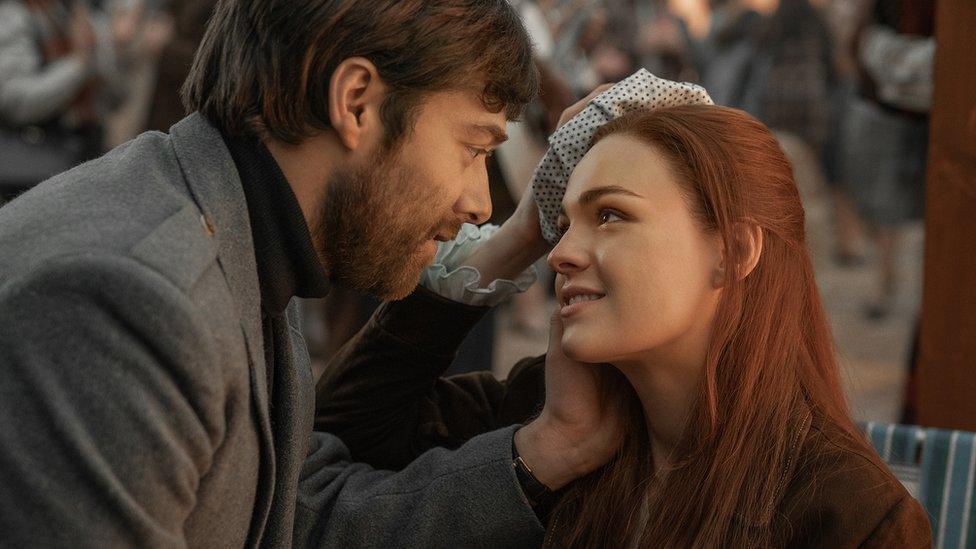Outlander tourism effect a 'double edged sword'
- Published
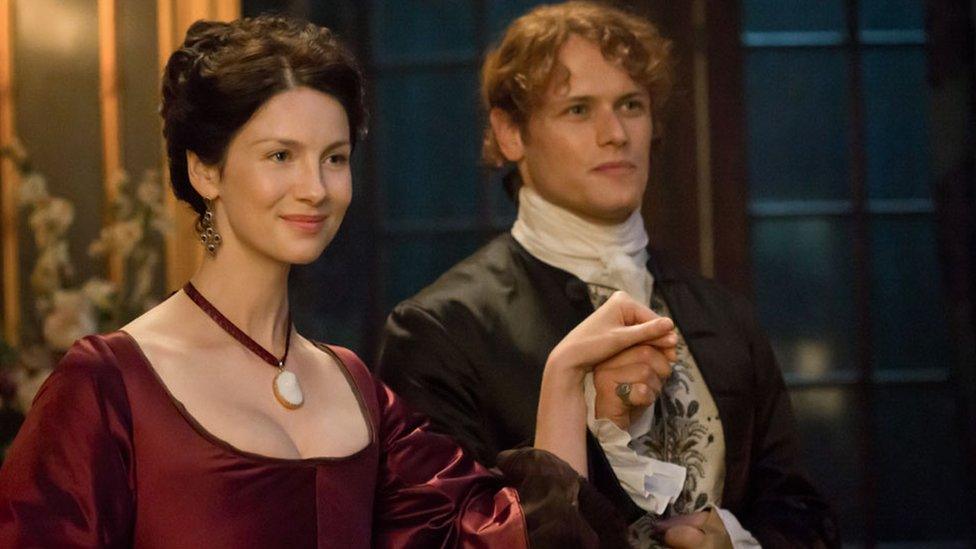
Partly set in the 18th Century, the time-travelling drama Outlander has a huge fanbase
Tourism at historic sites across Scotland is "booming" because of the popularity of the Outlander books and TV series. But the Outlander effect has been described as a "double edged sword".
Locations for the show, such as Doune Castle, near Stirling, has seen visitor numbers rise by 200%.
But along with the tourism boost comes wear and tear on footpaths and even items being taken as souvenirs.
Outlander, screened on Amazon Prime in the UK, follows the adventures of time-travelling World War Two nurse Claire, played by Caitriona Balfe, and Sam Heughan's 18th Century Jacobite Highlander Jamie Fraser.
The books written by US author Diana Gabaldon have been adapted for a successful TV series and season five will be released later this month, with Scottish locations standing in for places in 18th Century North America.
Filming for the first four seasons were done at locations across Scotland, and the legion of fans of the books and series have been flocking to the sites.
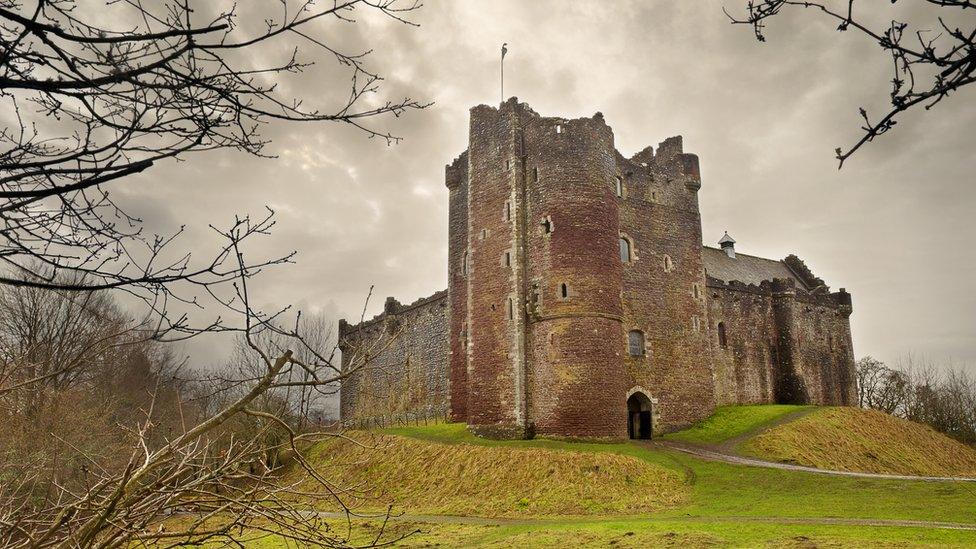
Visits to Doune Castle have increased by 200%
Since filming was first done at Doune Castle in 2013, visitor numbers have risen from 38,000 a year to 142,000.
Visits to Blackness Castle at Linlithgow, another of the locations, have increased from 15,000 to 58,000.
Researchers at Glasgow Caledonian University have studied the Outlander effect on 25 of the shows locations across Scotland and seen a 45% rise in visitors to the sites over four years, "well in excess" of increases experienced at other Scottish attractions.
Even Outlander's theme song, The Skye Boat Song, has had an impact on tourism.
Prof John Lennon, of Glasgow Caledonian University, told BBC Radio Scotland: "We had a researcher looking at this in the context of Skye where she found almost half the visitors she interviewed were there because of the Outlander title sequence.
"They were then asking 'where are the stones?', and the stones in the title sequence are actually on Lewis - the Calanais Stones."
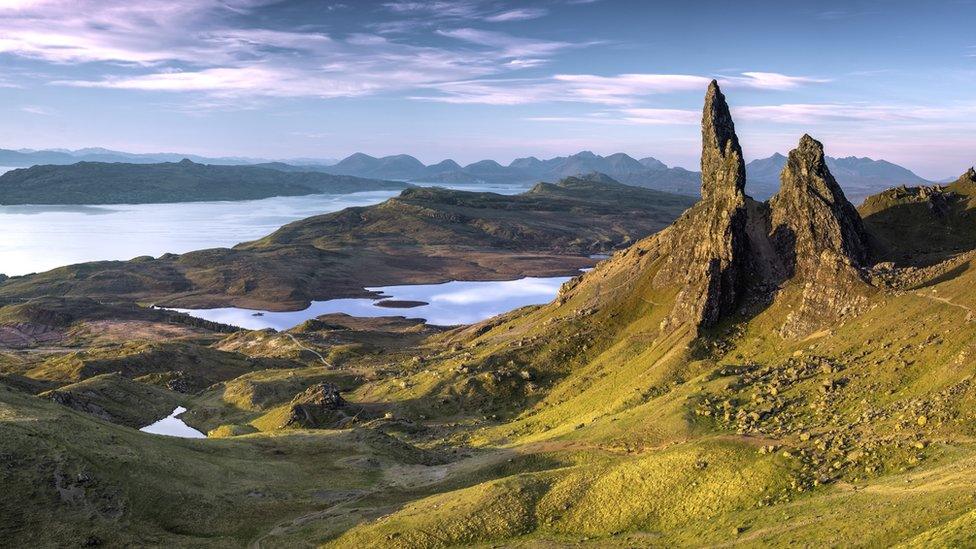
Outlander's theme song has drawn Outlander fans to Skye
Small businesses close to the various locations have welcomed the boost in tourism.
Suzanne Gillies, of the Buttercup Cafe in the village of Doune, said her customers were from all over the world.
She said: "I like having them. They create a good atmosphere.
"They do ask a lot of questions: 'how far is it to Loch Lomond, and where is this? But I am happy to help and you want to sell your country and want them to experience the best of Scotland."
Vicki Chapman-Campbell, who offers holiday accommodation in the area, says the Outlander effect is a double-edged sword, bringing a welcome economic boost but also some challenges, such as those posed by busy traffic on Doune Castle's "very wiggly small" road.
Culloden Battlefield, near Inverness, has also been enjoying a boom in visits with numbers rising from 150,000 to more than 220,000 and now forecast to rise to nearer 300,000.
But again the huge volume of visitors has brought some challenges.
Raoul Curtis-Machin, of the National Trust for Scotland, said: "This has taken its toll on the grass and gravel footpaths."
Last year, the Fraser Stone, a "hotspot" for Outlander fans at Culloden was cordoned off because the ground around it became muddy and slippery due to the numbers of people visiting it.
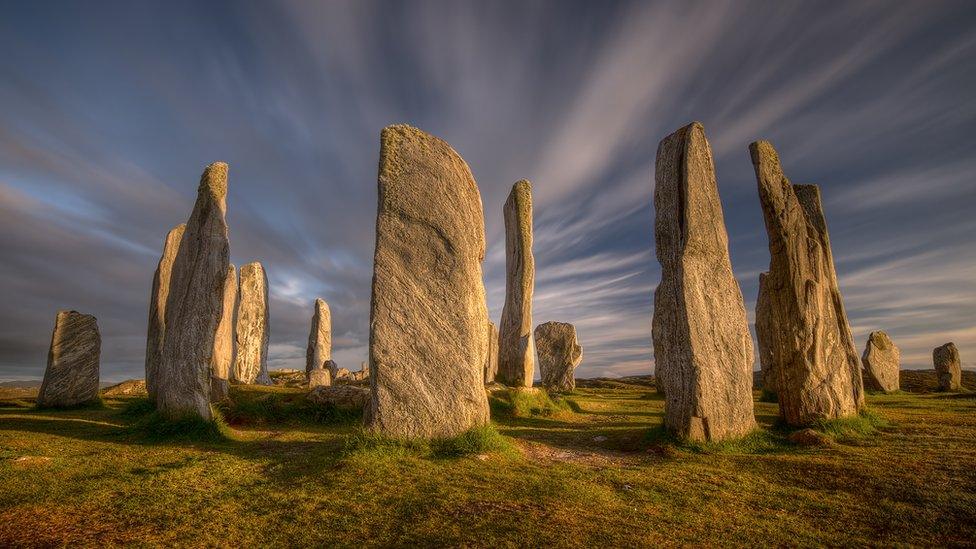
The Calanais Standing Stones feature in Outlander's title sequence
Mr Curtis-Machin said a more unusual issue has been souvenir hunters.
He said he had recently been sent a letter from the US along with a package containing stones taken from Culloden. The sender apologised for taking the stones and asked if they could be returned to the battlefield.
"I duly did," said Mr Curtis-Machin, adding: "To me, although you could not possibly condone anybody taking stones, the very gesture they sent them back is to me a mark of respect."
Gabaldon, the creative genius behind Outlander, said she tried her best to encourage fans to "tread lightly" at Outlander's historic locations.
She told BBC Scotland's The Nine: "We are very privileged to be able to use a lot of Scottish locations for the filming.
"They are not film sets. They should be respected."
- Published6 December 2019
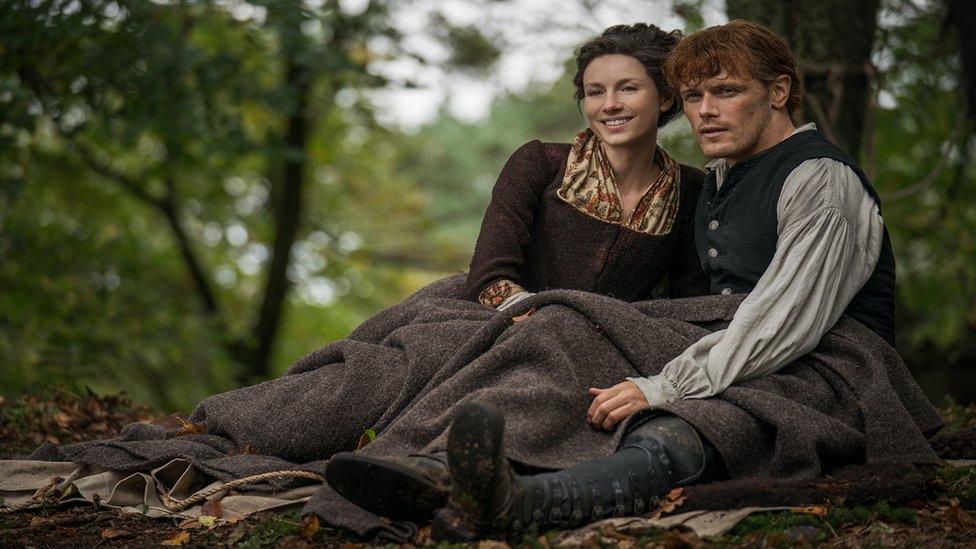
- Published15 November 2019

- Published14 March 2019

- Published29 October 2018
